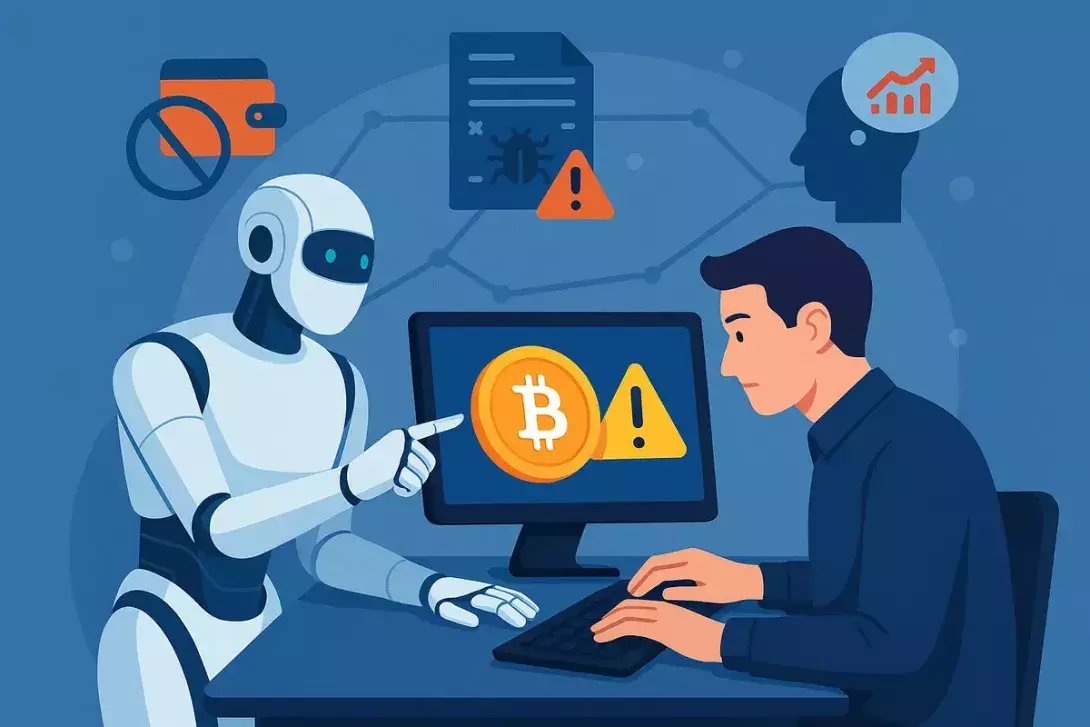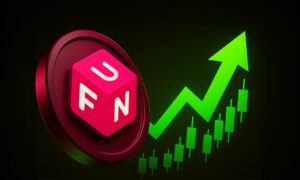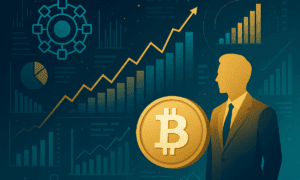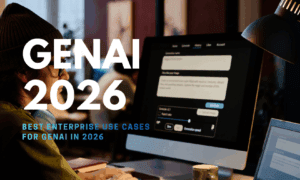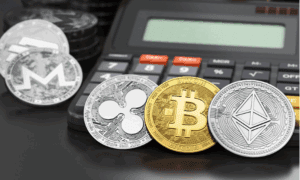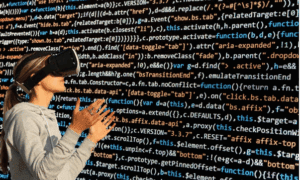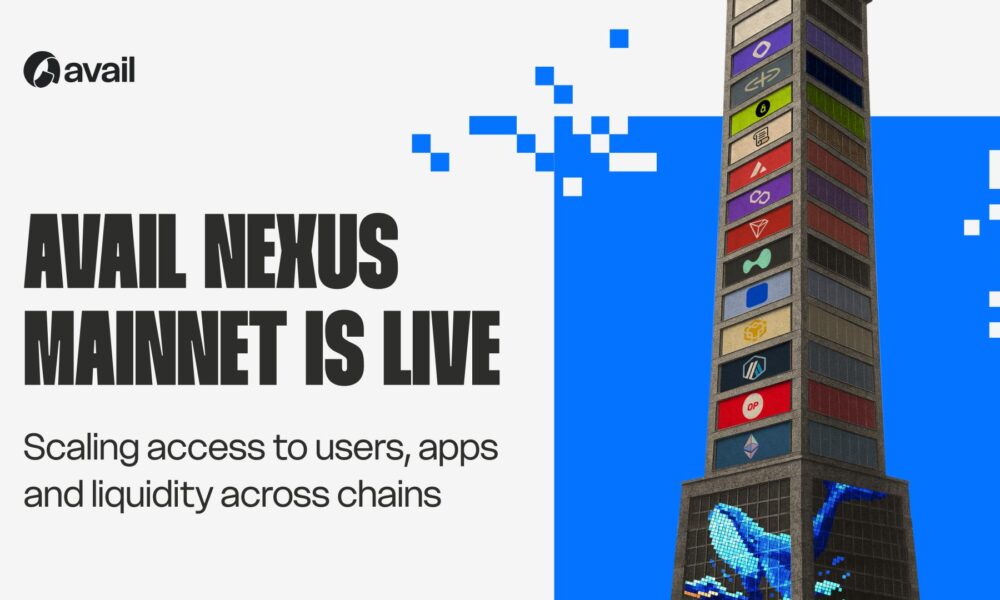Introduction
Artificial Intelligence (AI) is reshaping many industries, and crypto trading is no exception. In 2025, the combination of automated decision-making, real-time data analysis, and predictive modeling is making it easier for both beginners and professionals to invest and trade cryptocurrencies with confidence.
Crypto markets are fast, volatile, and active 24/7. Human traders struggle to keep up with the pace. That’s where AI comes in. Trading bots powered by AI can analyze trends, execute orders in milliseconds, and adjust strategies instantly—without emotions or fatigue.
One of the most exciting developments is the rise of automated cryptocurrency platforms built specifically for smart investing and trading. These platforms offer a simple way for users to benefit from AI-powered trading without needing to code or interpret complex charts.
Switzerland has become a global leader in this space. Known for its innovation and financial stability, the country now hosts several advanced fintech companies. Among them is Treu Vaultix—a Swiss-based investment and trading platform that combines powerful AI algorithms with a transparent user experience.
Treu Vaultix represents a new generation of tools that are not only smart but also designed with safety, usability, and regulatory clarity in mind. Whether you are new to crypto or looking to optimize your portfolio, AI can help you make better decisions—and platforms like Treu Vaultix make it accessible.
In this article, we will explore how AI is transforming crypto trading. You’ll learn how the technology works, what kinds of bots exist, the role of sentiment analysis, risk management tools, and what to expect from the future of automated trading.
Evolution of AI in Crypto Trading
The use of automation in trading started long before cryptocurrencies appeared. Early systems were based on simple rules—buy if the price goes up, sell if it drops. These were called rule-based trading systems or scripts.
As computing power grew, traders began to use machine learning. These models could process more data and detect patterns that humans might miss. Machine learning marked a shift from following fixed rules to learning from historical data. Instead of telling the system what to do, traders trained it to make decisions based on previous results.
The next big leap came with deep learning. This is a form of machine learning where algorithms use layered neural networks to recognize complex trends. For crypto trading, deep learning helps systems understand sudden spikes in volume, long-term price movements, and hidden market signals.
Recently, reinforcement learning has entered the scene. This method allows AI agents to learn by trial and error—just like a human trader, but much faster. These agents try different strategies, get feedback based on their performance, and improve over time.
Here is a simple comparison of AI development stages in crypto trading:
| Generation | Technology | Main Feature |
| 1st | Rule-based bots | Fixed trading instructions |
| 2nd | Machine learning | Pattern recognition from data |
| 3rd | Deep learning | Multilayer trend analysis |
| 4th | Reinforcement learning | Self-improving strategies |
This evolution shows how the trader’s role has changed. Instead of making every decision, many traders now focus on selecting the right AI model or platform. From monitoring the market to monitoring algorithms—that’s the new reality.
Platforms like Treu Vaultix reflect this shift by offering users AI tools that evolve and adapt based on market behavior. This means traders no longer need to react to every chart—they can rely on well-trained systems to act in their best interest.
Types of AI Bots and What They Do
AI-powered trading bots come in many forms. Each type is designed for a specific strategy, and together they cover most of the needs of modern crypto investors. Some bots focus on small profits from frequent trades, while others look at long-term trends. Let’s break down the most common types:
1. Grid Bots
Grid bots work by placing buy and sell orders at fixed intervals above and below a set price. They profit from market fluctuations within a certain range. This is useful in sideways or slightly volatile markets. Grid bots are popular because they require little market prediction.
2. Market-Making Bots
These bots provide liquidity by constantly placing both buy and sell orders. They earn from the difference between the two prices (the spread). Market-making bots are essential on new or low-volume exchanges.
3. Arbitrage Bots
Arbitrage bots exploit price differences between exchanges. For example, if Bitcoin is cheaper on one exchange than another, the bot buys on the lower-priced platform and sells on the higher one. Fast execution is key here, and AI improves timing and efficiency.
4. Sentiment-Based Bots
These bots scan news, tweets, and social media to gauge public sentiment. Using NLP (Natural Language Processing), they can predict how positive or negative opinions might move prices. They are ideal for fast-reaction strategies during events or announcements.
5. High-Frequency Trading (HFT) Bots
HFT bots make hundreds or thousands of trades in seconds. They use complex algorithms and direct market access to gain tiny profits per trade—but in massive volumes. AI improves their ability to avoid losses and catch price changes before human traders can.
Integration with Exchanges
Most bots are connected via API to exchanges like Binance, Coinbase, or Kraken. Users can set parameters, choose strategies, and monitor results. However, not every bot is created equally. Some require technical knowledge, while others are built for regular users.
This is where platforms like Treu Vaultix make a real difference. It combines multiple bot types under one smart system. Users don’t need to choose a single strategy—instead, Treu Vaultix’s AI engine automatically selects the best method based on real-time market data.
- Swiss-made quality: Treu Vaultix benefits from the precision and security expected from a Swiss investment platform.
- Adaptive AI: Its bots adjust to market changes, user risk preferences, and global crypto trends without manual input.
As a result, investors can enjoy automated trading that’s both sophisticated and simple to use—no coding, no stress, just smart decisions powered by AI.
How AI Predicts the Market
One of the most powerful applications of AI in crypto trading is its ability to predict market behavior. Unlike humans, AI can process thousands of data points per second and recognize patterns that are too complex for manual analysis.
The most effective models for price prediction are based on neural networks. These systems learn from historical market data and generate forecasts based on how prices moved in the past under similar conditions. Among the most common models are:
- LSTM (Long Short-Term Memory): Designed for time series data like price movements. LSTM can remember patterns over long periods and is especially useful in predicting future prices of assets like Bitcoin or Ethereum.
- GRU (Gated Recurrent Unit): A faster, lighter version of LSTM. It also works with time-based data and is often used when speed is more important than deep memory.
- Attention-based networks: These models focus on the most relevant parts of data. For example, during a price spike, they prioritize recent changes more heavily than older ones.
AI models don’t just look at charts. They process a combination of data:
- Historical prices and volumes
- Order book depth and liquidity levels
- Volatility indices and technical indicators
- Global market news and events
For example, when Bitcoin’s price suddenly jumps after a news event, AI can learn that similar news in the future might trigger similar reactions. With enough examples, the model becomes highly accurate in short-term forecasts.
Compared to manual trading, AI-driven predictions are faster and more consistent. Human traders might miss signals or react emotionally. AI acts logically and instantly—making it ideal for volatile markets.
Treu Vaultix uses a combination of these AI models to enhance decision-making. Its forecasting engine processes real-time data from exchanges, news feeds, and on-chain activity to make split-second adjustments. This gives users an edge, especially in fast-moving markets where every second counts.
Sentiment and News Analysis (NLP)
Markets are not driven by numbers alone. Emotions, opinions, and social media trends often play a big role—especially in crypto. AI systems today can read and understand this type of information using Natural Language Processing (NLP).
NLP is a branch of AI that helps machines understand human language. In crypto trading, it allows bots to scan massive amounts of text and extract valuable signals. These texts include:
- News headlines from financial websites
- Social media posts from Twitter, Reddit, and Telegram
- Blog articles, press releases, and forum threads
For example, if a major exchange is rumored to be hacked, NLP bots will quickly detect an increase in negative keywords like “hack,” “scam,” or “shutdown.” The bot can then flag this as a risk signal and adjust trades accordingly—long before the news hits official channels.
Advanced AI models like BERT and GPT are commonly used in this field. They understand context, tone, and even sarcasm—making them much better than simple keyword searches.
Why does this matter? Because the crypto market is extremely sensitive to sentiment. One viral tweet or Reddit post can send prices up or down within minutes. By catching these signals early, NLP bots can give traders a major advantage.
Treu Vaultix integrates real-time NLP tools into its automated system. Its bots monitor global sources in multiple languages and apply sentiment scoring to every major coin. This means trades are not based on charts alone, but on how people actually feel and react—turning emotion into data-driven action.
Risk Management Through AI
Crypto trading offers high potential returns, but also carries serious risks. Sudden price drops, market manipulation, and technical failures can lead to heavy losses. That’s why risk management is a critical part of any smart trading strategy—and AI plays a major role in this area.
Modern AI systems are trained to detect and respond to danger signals in real time. One important method is anomaly detection. AI analyzes normal market behavior and flags unusual activity. For example, if trading volume spikes or a coin’s price drops too fast, the system can react instantly.
Another tool is the use of automated stop-loss functions. These features help traders lock in profits or limit losses by exiting trades at predefined points. AI makes this smarter by adjusting the stop-loss level dynamically, based on market volatility and momentum.
In addition, AI can recognize suspicious patterns that suggest market manipulation or flash crashes. Unlike traditional systems that react after the damage is done, AI can predict and avoid these situations by identifying early warning signs.
- Real-time protection: AI monitors the market 24/7, reducing the need for constant manual supervision.
- Multi-layered safety: It combines technical indicators, price movement, and sentiment data for full coverage.
Treu Vaultix includes a built-in AI risk engine. It tracks user portfolios and applies customized safety rules based on personal preferences. If volatility rises beyond a set threshold, the platform can reduce exposure or shift capital into more stable assets—automatically.
This kind of smart defense system is especially valuable for beginners and part-time investors. It gives peace of mind, knowing that their funds are actively protected by a platform built for safety first.
Pros and Cons of AI in Trading
AI offers powerful tools for crypto traders, but like any technology, it has both advantages and limitations. Understanding both sides helps investors choose the right strategy and platform for their needs.
Advantages
- Speed and Precision: AI bots can execute trades in milliseconds. They don’t hesitate or miss opportunities due to emotion or fatigue.
- 24/7 Operation: Crypto markets never sleep. AI systems stay active around the clock, making trades while users rest.
- Emotion-Free Decisions: AI acts on data, not fear or greed. This leads to more consistent, disciplined trading.
- Scalability: AI can manage hundreds of assets and strategies at once—far beyond human capacity.
- Data Analysis: AI can process huge amounts of information in real time, including technical indicators, social sentiment, and on-chain data.
Disadvantages
- Complexity: Advanced AI models can be difficult to understand. Some traders feel unsure about trusting a “black box.”
- Overfitting Risks: If an AI system is trained too closely on past data, it may fail when market conditions change suddenly.
- Technical Dependence: AI bots rely on stable internet, APIs, and exchange uptime. If systems go down, trades may be delayed or blocked.
- Regulatory Uncertainty: Not all countries have clear rules for AI-based trading. Compliance can be a concern, especially for large-scale operations.
Platforms like Treu Vaultix aim to reduce these drawbacks. Its interface is built for simplicity, and users can customize strategies without needing deep technical skills. The system also explains its trading logic in plain language—making AI feel more like a partner than a mystery.
By balancing automation with transparency, Treu Vaultix helps investors enjoy the benefits of AI while staying in control.
Regulatory Challenges and Legal Framework
As AI becomes a bigger part of crypto trading, governments and financial authorities are taking a closer look. While automation brings efficiency, it also raises questions about safety, fairness, and accountability.
One of the biggest concerns is transparency. Regulators want to ensure that AI bots do not manipulate prices or create unfair advantages. When algorithms make decisions faster than any human can react, it’s essential that these actions are clearly logged and auditable.
In many countries, there are few or no specific rules yet for AI-based trading. Some regions treat AI like any other tool, while others are drafting new laws to handle automated systems more carefully. This creates a patchwork of rules that can confuse investors and platforms.
Switzerland stands out for its balanced approach. Through its regulator FINMA, the country supports innovation while maintaining strong oversight. Swiss platforms must follow clear rules for data protection, transparency, and user protection—even when using advanced technologies like AI.
For example, platforms like Treu Vaultix operate under Swiss standards, combining cutting-edge technology with full regulatory compliance. This gives users confidence that their funds are managed within a legally safe environment.
- Audit trails: Every AI decision is recorded and can be reviewed.
- User control: Investors can override or adjust settings at any time.
- Security protocols: Platforms must protect user data and assets according to national laws.
As crypto regulations evolve worldwide, platforms that build with compliance in mind—like Treu Vaultix—are better positioned for long-term success and user trust.
Trends and the Future of AI in Crypto Trading
The evolution of AI in crypto trading is far from over. New tools, techniques, and ideas are shaping what the future will look like for both investors and platforms. Here are some of the top trends driving the next phase of growth:
1. AI-Powered Meme Tokens
Some projects now use AI to create and manage meme-based cryptocurrencies. These tokens are often tied to AI-generated content, including names, branding, and even tokenomics. While they may seem playful, they demonstrate how deeply AI can integrate into creative and financial processes at once.
2. Voice-Controlled Trading Assistants
Imagine saying, “Buy $100 in ETH if the price drops 3% in the next hour,” and your trading platform executes it instantly. AI-powered voice assistants are being tested on some platforms, making crypto more accessible to people who prefer natural interaction over buttons and charts.
3. Hybrid AI + Human Decision-Making
The most effective systems won’t replace traders—they’ll support them. Expect more platforms to offer AI-driven suggestions while letting users confirm or adjust strategies. This “AI co-pilot” model empowers users while still benefiting from automation.
4. DeFi and NFT Integration
AI tools are increasingly being used in decentralized finance (DeFi) protocols and NFT markets. From liquidity pool optimization to dynamic NFT pricing, AI helps users navigate these fast-changing ecosystems with smarter decisions and less manual work.
5. Localized Compliance and Smart Risk Profiling
AI is also being trained to understand regional laws, user profiles, and market conditions. This means platforms like Treu Vaultix can offer personalized strategies that meet both user goals and legal standards in their home country.
Treu Vaultix is already adopting many of these innovations. As a Swiss-based automated cryptocurrency platform, it combines transparency, AI flexibility, and secure investment tools—offering a glimpse of what the future of trading may look like.
- Smart portfolios: Adjust to market and user sentiment in real time.
- Cross-platform intelligence: Learn from multiple exchanges and sources.
- Responsible AI: Designed with ethics and user safety in mind.
The future is not about choosing between human or machine. It’s about combining the strengths of both.
Conclusion
AI is no longer just a buzzword in crypto trading—it’s a real tool that is changing how people invest and manage digital assets. From predictive models to emotion-free decision-making and 24/7 automation, AI gives traders an edge in a fast-moving market.
But the goal isn’t to remove human control. The most effective systems use AI to support traders, not replace them. This balanced approach allows for smarter decisions without giving up flexibility or personal strategy.
Switzerland continues to lead the way in responsible crypto innovation. With strong regulation and a focus on transparency, it creates the perfect environment for platforms that want to build trust and performance at the same time.
Treu Vaultix is one of the standout examples in this space. As an automated cryptocurrency platform built for both trading and investment, it offers users advanced AI tools while remaining simple and safe to use. It reflects the best of what’s possible when technology and responsibility work together.
For beginners, AI can remove guesswork. For experienced traders, it adds speed and insight. No matter your level, platforms like Treu Vaultix give you the tools to trade with confidence in 2025 and beyond.
The future of crypto isn’t just digital—it’s intelligent.

